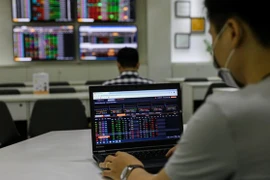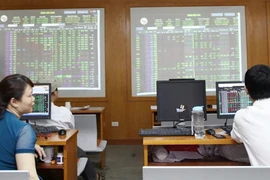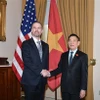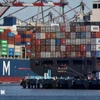Hanoi (VNS/VNA) - Domestic investors in Vietnam opened 387,610 new securities accounts in the first quarter of 2025, despite a slight decline of 3.5% compared to the same period last year, according to Vietnam Securities Depository and Clearing Corporation (VDSC).
VDSC said that the net number of new accounts, calculated as the difference between accounts opened and closed, rose sharply in March, totalling 157,380 accounts. This surge marked the most robust performance in six months.
Individual domestic investors contributed significantly, adding 157,001 new accounts, also the highest figure in the same timeframe.
While individual domestic investors showcased remarkable activity, institutional investors joined with a net opening of 188 new accounts in March, surpassing the 61 accounts opened in February.
As a result, the total number of new accounts opened by domestic investors reached 157,189 in March alone, bringing the cumulative total of registered accounts in the country to nearly 9.64 million.
Meanwhile, foreign investors opened only 191 new securities accounts in March, reflecting a modest increase of 63 accounts compared to the previous month. This included 188 accounts opened by individual foreign investors, while the rest belongs to institutional foreign investors.
The total number of accounts opened by foreign investors in the first quarter was 479, bringing the cumulative number to 48,259.
The Vietnamese stock market now boasts nearly 9.69 million trading accounts.
The resurgence in new accounts came amid a generally positive sentiment surrounding the market, which maintained its upward trajectory throughout March.
By the end of the last trading session in March, the VN-Index on the Ho Chi Minh Stock Exchange (HoSE) closed at 1,306.86 points, showing slight increases of 0.11% from February, while the VN30-Index, tracking the 30 biggest stocks in term of market capitalisation, also rose by 0.55%. However, the VNAllshare index experienced a decline of 1.05%.
Market liquidity demonstrated notable growth in March, with an average trading volume exceeding 878 million shares per day and average transaction values surpassing 20.8 trillion VND (798.8 million USD), up 33.2% in trading volume and 31.83% in value compared to February.
Foreign investors had a total trading value exceeding 97.1 trillion VND last month, accounting for more than 12.78% of the overall market transaction volume. Nonetheless, they recorded net selling activities totalling over 9.56 trillion VND during this period.
The return of foreign capital
A recent report from SGI Capital showed a potential resurgence of foreign capital inflows into the Vietnamese stock market during the latter half of the year.
This optimistic outlook comes in the wake of several economic challenges, particularly those stemming from unexpected tariff policies announced by US President Donald Trump, which have significantly impacted investor sentiment.
The immediate effects of heightened tariffs have manifested in a swift decline in stock prices as both domestic and foreign investors reacted by offloading shares.
The prevailing sentiment among investors is one of caution, given the uncertainty surrounding Vietnam's economic stability, particularly concerning its export-oriented businesses and the indirect consequences on employment and consumer spending as foreign direct investment (FDI) firms narrow their operational scales.
SGI Capital's analysis suggests that over the next two months, the initial shock from these tariff changes is expected to dissipate as the market adjusts.
"We believe that the risks associated with tariffs impacting investors are rapidly priced in stocks and will gradually subside over the next two months," SGI Capital said in the report.
"In the latter half of this year, foreign capital is likely to return for net purchasing, driven by appealing valuations and the anticipated upgrade to emerging market status."
If negotiations regarding tariffs succeed, resulting in reductions to levels between 10% and 20%, the momentum for export growth and FDI inflows may stabilise, alleviating some concerns regarding economic contraction.
In the case of higher tariffs exceeding 20%, the Vietnamese Government is likely to implement stronger domestic stimulus measures. This could include interest rate cuts, tax relief initiatives and public spending packages designed to support local businesses, absorb labour forces affected by export declines and achieve robust economic growth targets.
SGI Capital emphasises the need to view this market turmoil as a potential investment opportunity. Recent declines have brought stock valuations to historically low levels, sparking interest in long-term investment prospects./.
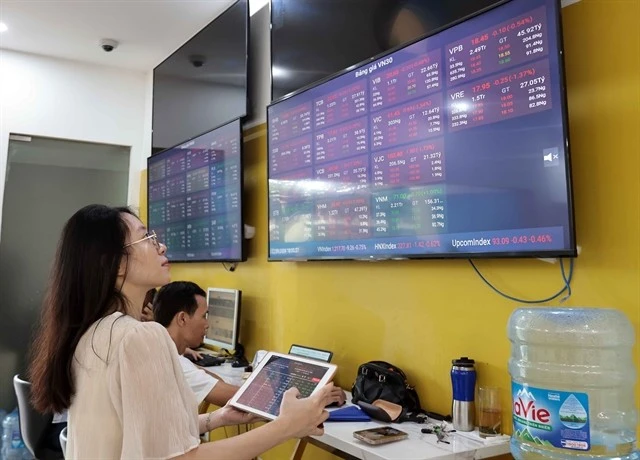
See more
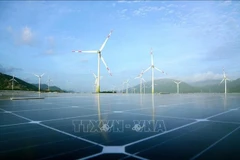
PM approves adjusted national power development plan for 2021-2030
The key objective is to ensure sufficient electricity for national socio-economic development toward an average GDP growth rate of around 10% per annum during 2026–2030, and approximately 7.5% per annum for 2031–2050.

PM chairs leaders-business community dialogue on public-private partnership for innovation, sustainability
Prime Minister Pham Minh Chinh affirmed that Vietnam always listens to and understands the opinions of businesses at a dialogue between leaders and the business community on Public-Private Partnership for innovation and sustainability held in Hanoi on April 17 within the framework of the 4th Partnership for Green Growth and the Global Goals 2030 (P4G) Summit.
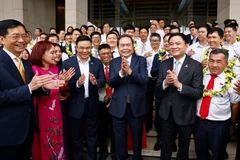
Petrovietnam urged to uphold tradition, foster innovation
The group needs to continue implementing reforms and innovations, applying advanced governance methods to enhance management efficiency, manage resources effectively, and improve competitiveness, he said.

PM seeks IFAD’s support for Vietnam’s carbon credit market development
Highlighting the country's commitment to developing green and sustainable agriculture, PM Chinh requested IFAD to increase preferential loans and promote non-refundable aid for projects applying scientific and technological innovations in agriculture, while helping Vietnam successfully carry out the one million hectares of low-emission, high-quality rice project.

Green growth – an irreversible global trend: P4G discussions
Ministerial discussions were held on April 17 within the framework of the 4th Partnership for Green Growth and the Global Goals 2030 (P4G) Summit, bringing together domestic and international officials to address critical aspects of sustainable development and green transition.
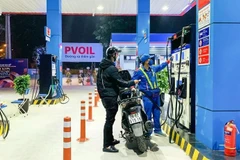
Petrol prices fall for second consecutive adjustment
E5 RON92 petrol has been capped at 18,498 VND (0.71 USD) per litre, down 384 VND, while RON95-III petrol now costs 18,856 VND per litre, a decrease of 351 VND.
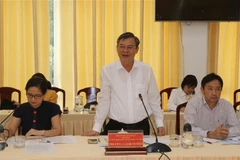
Singaporean, Indonesian companies seek investment opportunities in Can Tho
Can Tho is preparing to break ground on a 300-ha secondary factory in the Vietnam-Singapore Industrial Park (VSIP). Therefore, the city is eager to attract investments, especially from Singapore.
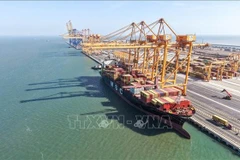
First commercial ship docks at new berths in Hai Phong
The official launching of terminals marks Hai Phong Port’s regional leading ability in port operations and reaffirms Hai Phong Port JSC’s key role in the North. Once HTIT is fully operational, Hai Phong Port’s market share in container cargo in the region is expected to reach 40%, and 60% for non-container cargo in the Hai Phong area.
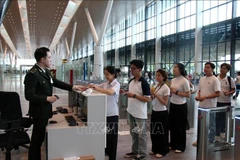
New terminal of Tan Son Nhat Airport put into use today
By the end of April, all domestic flights of Vietnam Airlines will officially operate at this new terminal, except for the ones linking HCM City with Con Dao, Ca Mau, and Rach Gia.

Reference exchange rate down 6 VND on April 17
The ceiling rate applicable for commercial banks during the day is 26,138 VND/USD and the floor rate 23,648 VND/USD.

Public security ministry proposes heavier fines, jail time for unsafe food trade
The proposal was included in the recent draft amendment to the Penal Code.

Vietnam to develop trade defence early warning system
Part of a new Government decree, the early warning system aims to provide timely information to businesses and industry associations, enabling them to take preventive measures and prepare appropriate responses.

Vietnam charts green path for shrimp industry amid global sustainability push
This year, Vietnam's shrimp industry aims for 1.3-1.4 million tonnes in production and 4-4.3 billion USD in export turnover. Encouragingly, shrimp exports topped 605 million USD in the first two months of this year alone, up 46% year-on-year
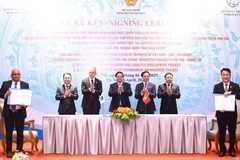
WB, ADB provide loans, grants for three projects in Vietnam
WB and ADB are long-standing strategic development partners of Vietnam, having supported the country’s poverty reduction, infrastructure development, governance, and sustainable development goals for decades.
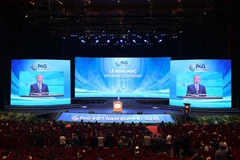
Hosting P4G summit reflects Vietnam’s growing leadership in advancing global green growth efforts
In light of the 2025 P4G Summit, the ambassadors of Denmark, the Netherlands, the European Union, and the Republic of Korea (RoK) to Vietnam, talked to Việt Nam News reporter Nguyen Hang about the impacts of the summit on global climate efforts and opportunities for P4G’s partners.
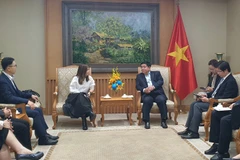
Deputy PM calls for SEMI SEA’s assistance in semiconductor, AI industry
The Deputy PM revealed that Vietnam is intensifying efforts to achieve its goal of training 50,000 engineers for the semiconductor industry by 2030, requesting SEMI SEA and its member companies coordinate with Vietnam's Ministry of Finance and the National Innovation Centre (NIC) to implement this training programme.

People must come first to achieve development goals: P4G
Leaders and representatives from around the world issued a clear and unified message: sustainable development must put people first and embrace technology as a force for inclusive transformation.

US chipmaker urged to help Vietnam develop AI, semiconductor hub
Deputy PM Nguyen Chi Dung said Vietnam boasts advantages for developing the AI and semiconductor industries, noting that the country already has a relatively strong ecosystem for the sector.

Vietnam eyes stronger trade, investment links with France's northern region
Ambassador Dinh Toan Thang stressed that Hauts-de-France, with its robust industrial base, well-developed seaport and logistics networks, and open investment environment, represents a highly promising partner for Vietnamese localities and businesses aiming to deepen integration into the European Union market.

P4G Summit: Experts give advice to promote entrepreneurship in green transition
The world is witnessing profound changes in socioeconomic development, where the goal of growth is no longer just about numbers, but must go hand in hand with responsibility for the environment and future generations.

